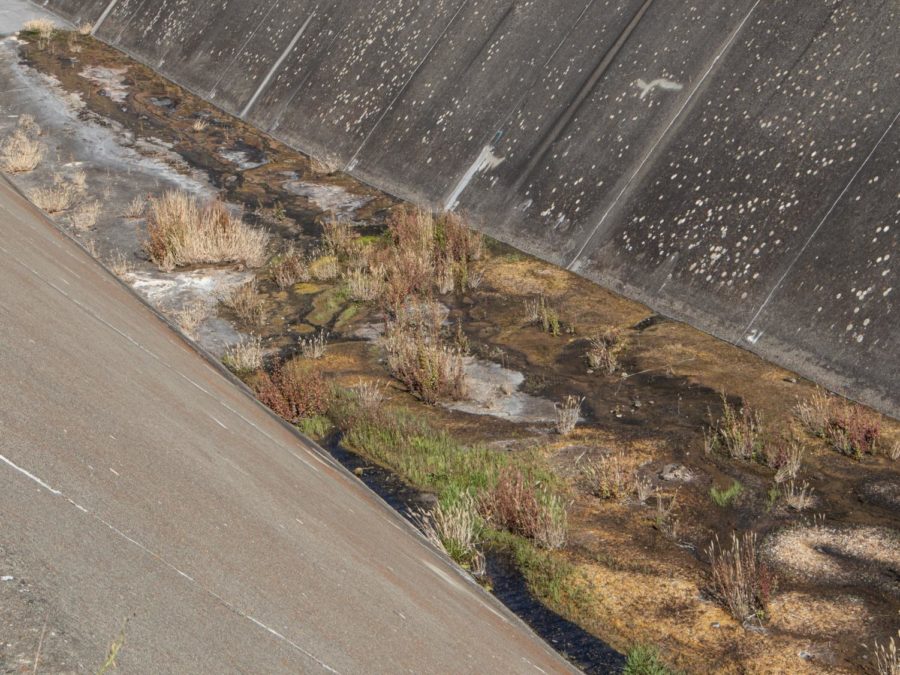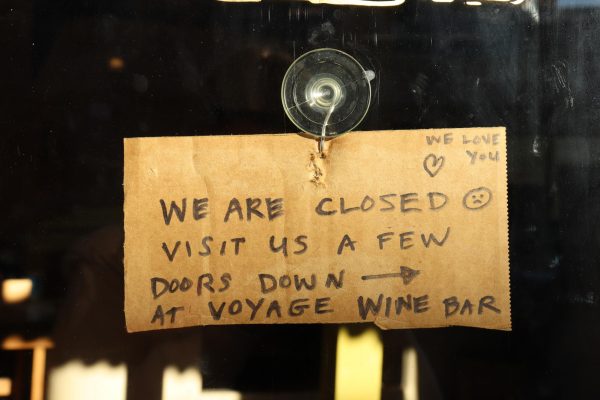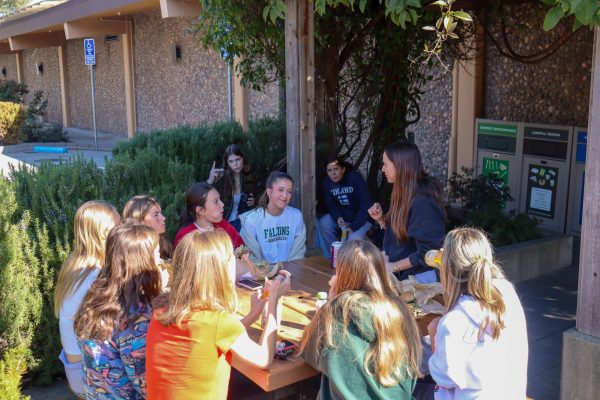Local advocates call for less county water use
Nicasio Reservoir’s spillway has so little water that vegetation and algae began growing in places where rushing water would otherwise flush them clear.
With record heat waves, and infrequent rain, California’s statewide drought continues to sap water resources. Although not as severe compared to previous years, local advocates call for decreased water use among Marin residents in response to current drought conditions.
According to the National Integrated Drought Information System, 100% of Marin County is still considered to be in a severe drought, leading to unsustainable grazing land for livestock and prolonged fire seasons. Although Marin’s drought conditions are relatively stable, rainfall since July 1 of 2022 was recorded at 8.33% of the average rainfall for this time period.
Jack Gibson is a Member of the Marin Water Board of Directors, to which he was elected in 1994 and has served on ever since. His assignments include Vice Chair of Finance & Administration Committee and Communications & Water Efficiency Committee in Division I in Marin Municipal Water District’s Board of Directors. Gibson assists in overseeing processes which can most efficiently utilize Marin’s water intake.
“Well, we’re of course still in the drought. I mean, statewide, beyond statewide – really the whole western United States. They’re saying the last couple of years have been the driest couple of years in 1200 years,” Gibson said.
Although Marin County and Sonoma County have two separate water systems, Gibson says that over 25% of water in Marin has been coming from the Russian River via the Sonoma Water Service. Gibson says, for the benefit of both Marin and Sonoma, both counties should continue to work and collaborate with one another.
“It makes so much sense to have a more regional approach to our water solutions.” Gibson said.
Due to more efficient piping, water supply from the Russian River increased, allowing reservoir levels to remain stable. However, Gibson says this led to an overall lack of concern of the current drought.
“When there’s less pressure and less emergency, people relax a bit and they don’t become so obsessive about it and so [drought awareness] definitely diminishes,” Gibson said.
AWHS senior Jack Long is Co-President of the Water Conservation Club alongside senior Aiden Mann, a club that aims to help students learn about conserving water.
“There is not a whole lot of information out about it. You know, the state has passed a few laws encouraging more water conservation acts, and there has been a lot of concern at the state and government level, but you don’t see a lot of [clear indicators of] the drought… I think that more information needs to be shared to inform people,” Jack said.
Jack, like Gibson, emphasized the importance of conserving water, even when it might not seem necessary.
“…Whenever the grass is green, people tend to put less emphasis and less care into water conservation measures. However, the point of water conservation is to kind of alter your lifestyle and live in a way that uses less resources throughout the year, whether we have water or do not have water, so that in the times that we do have low levels we are able to push through,” Jack said.
Local advocates for water conservation in Marin County continue to spread awareness about the current drought.

Grace is a senior, in her second year of journalism. She enjoys creating multimedia art and listening to 90s rap. She also loves puppies, rainbows, kitties...







